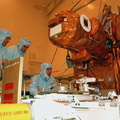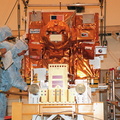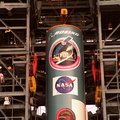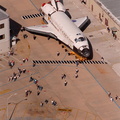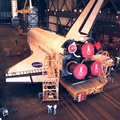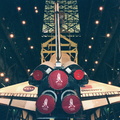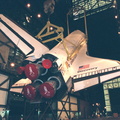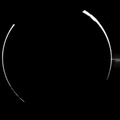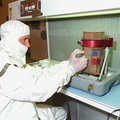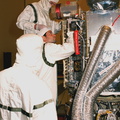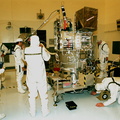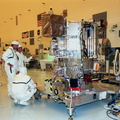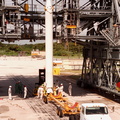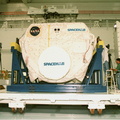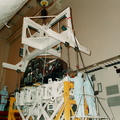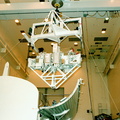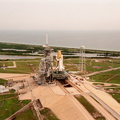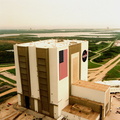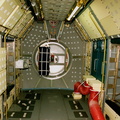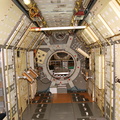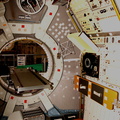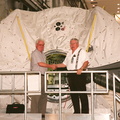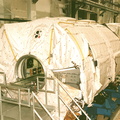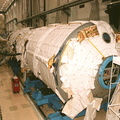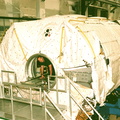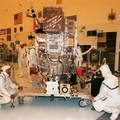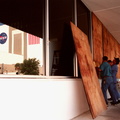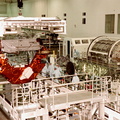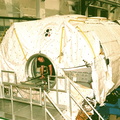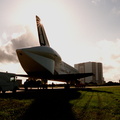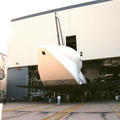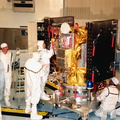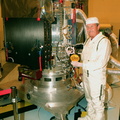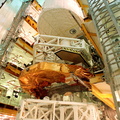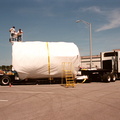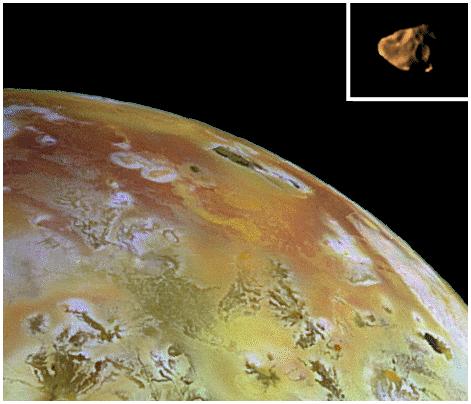
WIKIARCHIVES.SPACE
The Human Spaceflight Archive

Composite view of Amalthea and Io at the same scale. The visible part of Amalthea is about 150 kilometers across. The colors are approximate. Amalthea is actually much darker than Io, but is displayed at a similar brightness for ease of viewing. The shape of Amalthea is controlled largely by impact cratering and fragmentation. In contrast, Io, like Earth, has gravity sufficient to form it into a slightly ellipsoidal sphere. Amalthea is covered by craters because there are no processes which erode or cover them efficiently. On extremely volcanically active Io, impact craters are covered quickly by lavas and other volcanic materials. Some of the volcanic materials escape from Io and probably contribute to the reddish colors of Amalthea and the other small inner satellites.
Information
- Taken in
- Fotograaf/bron
- NASA/JPL/Cornell University
- Omschrijving
-
Composite view of Amalthea and Io at the same scale. The visible part of Amalthea is about 150 kilometers across. The colors are approximate. Amalthea is actually much darker than Io, but is displayed at a similar brightness for ease of viewing. The shape of Amalthea is controlled largely by impact cratering and fragmentation. In contrast, Io, like Earth, has gravity sufficient to form it into a slightly ellipsoidal sphere. Amalthea is covered by craters because there are no processes which erode or cover them efficiently. On extremely volcanically active Io, impact craters are covered quickly by lavas and other volcanic materials. Some of the volcanic materials escape from Io and probably contribute to the reddish colors of Amalthea and the other small inner satellites.
The Amalthea and Io composites, obtained by the solid state imaging (SSI) camera on NASA's Galileo spacecraft on different orbits, were placed side by side for comparison purposes. The Amalthea composite combines data taken with the clear filter of the SSI system during orbit six, with lower resolution color images taken with the green, violet, and 1 micrometer filters during orbit 4. The Io data was obtained on July 2nd, 1998 (orbit 14) using the green, violet, and 1 micrometer filters.
The Jet Propulsion Laboratory, Pasadena, CA manages the Galileo mission for NASA's Office of Space Science, Washington, DC.
- Aangemaakt op
- dinsdag 15 september 1998
- Albums
- US SPACE PROGRAM / PROBES / JUPITER / GALILEO / Mission Photos (Edited) / JUPITER / IO
- Source link
- https://photojournal.jpl.nasa.gov
- Bezoeken
- 19
- Waarderingsscore
- Geen waardering
- Waardeer deze foto
- License
- Public Domain
- Modified by WikiArchives
- No (original)
- Downloads
- 0
Mogelijk gemaakt door: Piwigo






















